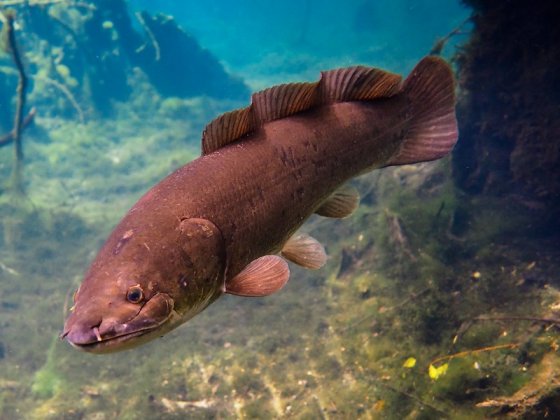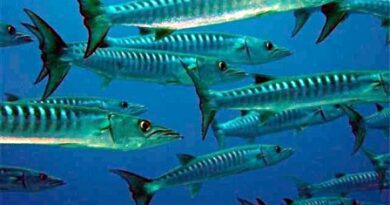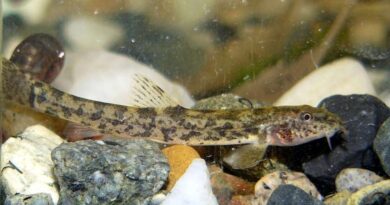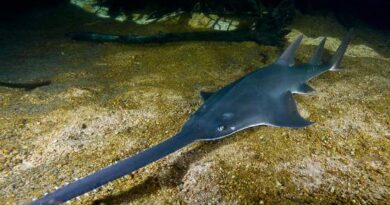BOWFIN
BOWFIN Amia calva belongs to one of the two remaining Holostei groups, which are primordial ray-finned fishes that gave origin to bony fishes. Although fossil bowfins have been discovered in Europe, the only living species is now restricted to the eastern half of North America. It’s a solid-looking cylindrical fish with a big dorsal fin and a thick scale armour. The body is a dull brownish-green colour with multiple dark vertical lines on the underside. A black patch near the base of the tail is observed in males and is bordered with yellow.
The bowfin has some anatomical characteristics that are interesting. A bony plate, the gular plate, sits behind the lower jaw, a vestige from its more basic forebears. There are vestiges of a spiral valve in the gut, a mechanism present in many early fishes that extends the digesting surface of the intestine significantly. The bowfin can breathe ambient oxygen thanks to the cellular structure of the swimbladder. Unlike most fish, the bowfin glides gracefully through the water thanks to a succession of waves that pass along its long dorsal fin. For quicker swimming, the traditional approach is used. Bowfins prefer warm, slow-moving waters, particularly in shallow, weedy places. The males build a circular nest on sandy or gravelly bottoms or in clearings in weed patches during the breeding season in early July. They then mate with numerous females and defend the eggs until the fry hatch and are able to swim well. They are carnivorous young and seem to prefer floor game fish in particular. A huge bowfin can grow to be almost 3 feet (91 cm) long. CLASS: Pisces, FAMILY: Amidae, ORDER: Holostei, FAMILY: Amidae



